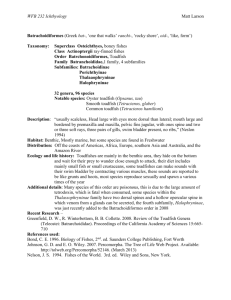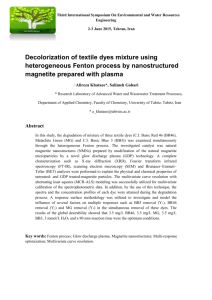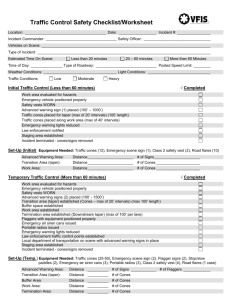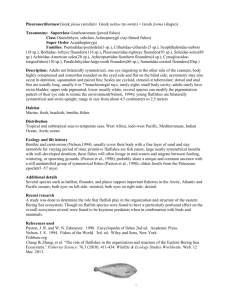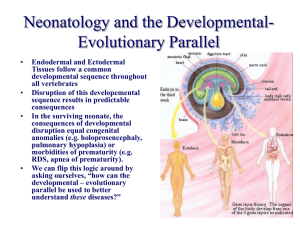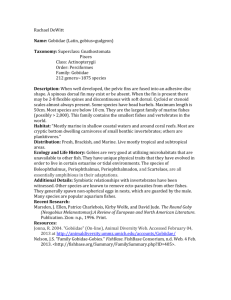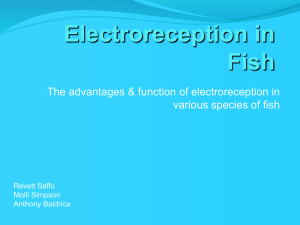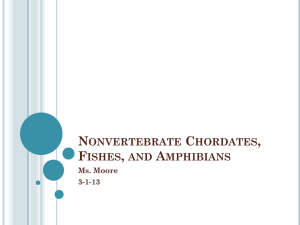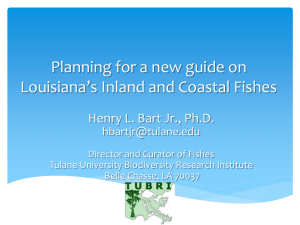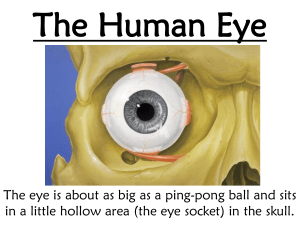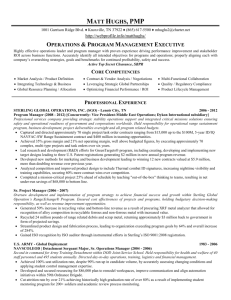Sensory perception
advertisement
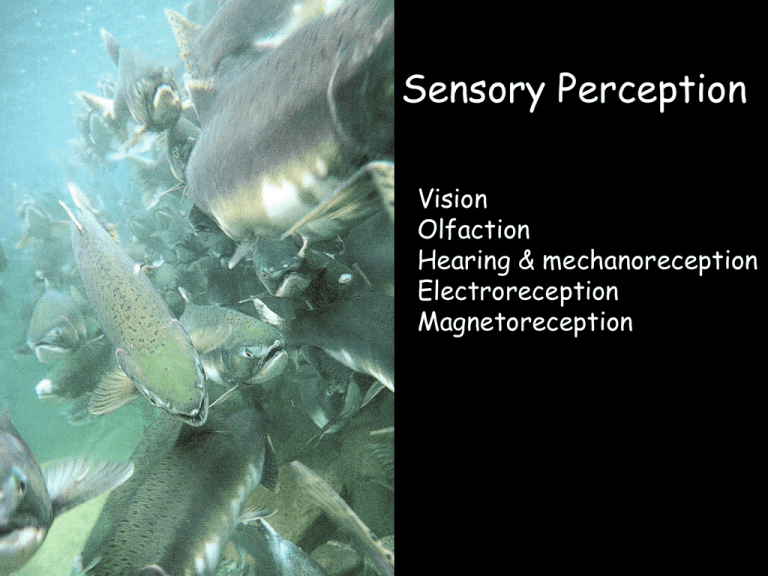
Sensory Perception Vision Olfaction Hearing & mechanoreception Electroreception Magnetoreception Senses Physical Quantity Sense Organ Sound Ears Water flow Lateral line Chemicals Taste Buds/Nose Electricity Ampullae of Lorenzini Magnetic Fields Nose ???? Light Eyes Acoustico – Lateralis System •Equilibrium •Hearing •Mechanoreception Hair sensory cells Sensory Hair Cells Hearing in Fishes • Fish have ears • Otoliths detect particle motion • Swimbladder can act as pressure transducer What is Sound? • Sound is a mechanical vibration that propagates through an elastic medium such as air or water. • Sound travels as waves of oscillating particles accompanied by increases and decreases in the ambient pressure. • Sound propagates along the axis of Speaker particle vibration. No Sound Compression Rarefaction Ear Morphology Fish hearing is generally lowfrequency Cyprinidae American Shad Audiogram Ultrasonic detection by american shad. Classical Conditioning: Example of cardiac response followed by electric shock Ultrasonic sound detection by American Shad Auditory Brain Response Sound Production Swimbladder of the toadfish, Opsanus sp. Sonic muscles can be seen on the lateral walls. Batrachoididae Oyster toadfish Opsanus tau Ecology of Sound Production 12000 10000 Frequency 8000 6000 4000 2000 0 18:00 19:00 20:00 21:00 22:00 23:00 Time 24:00 01:00 02:00 03:00 Sound produced by spawning aggregation of sciaenids Lateral Line Neuromasts: groups of hair cell w/gelatinous cupule Hydrodynamic Stimuli • Water currents from flows (rheotaxis) •Schooling/predator avoidance •Active hydrodynamic imaging •Passive hydrodynamic imaging •Courtship •Subsurface feeding Flows produced by organisms Lateral line shapes Electroreception Teleosts High frequency AC Elasmobranchs Teleosts Low frecuency AC - DC Electroreceptors Ampullae de Lorenzini Dogfish can detect a flounder buried 15 cm deep (1 mV/Km) Electrical fishes Electric Organ Discharge (EOD) • Modified muscle cells to create EOD Brachyhypopomus spp. EOD Magnetoreception • Elasmobranchs – Hammerhead shark schools – Laboratory experiments with rays • Teleosts – Magnetite found in Salmon and Tuna Magnetoreception Induced Electric Field •Currents in ocean flowing through earth’s magnetic field generate currents from <5 nV/cm to 500 nV/cm. •Suspected that eels use these currents, but not clear if they are sensitive enough to electrical fields. •Stingrays can sense fields as low as 5 nV.cm At ambient magnetic field of 0.5 gauss, a swimming speed of 1 cm/s would produce a threshold stimulus of 5 nV/cm. This has yet to be proven. Magnetite in Nose (Trout) a. Bacteria containing magnetite (not from the trout). b. Olfactory epithelium. Red dot with arrow is putative magnetite. c. Bright field (left) and dark field (right) TEM of dot from b. d. Energy dispersive analysis of x-rays from crystal. Shows presence of iron (Cu is from copper screen, Pb and U from TEM stains). Walker, Diebel, Haugh, Pankhurst, Montgomery, & Green. 1997. Structure and function of the vertebrate magnetic sense. Nature. 390: 371-376. Olfaction Taste Buds Vision Photoreceptor cells • Rods – Sensitive at low light levels – Present in all fishes • Cones – Sensitive at high light intensity – Some elasmobranchs and most fishes Red cones (600nm) Green cones (530nm) Blue cones (460nm) Ultraviolet cones (380nm) Electromagnetic Wavelengths Rod maximum absorption Visual Acuity Determined by eye aperture and photoreceptor density. Acuity increases as size increases.
